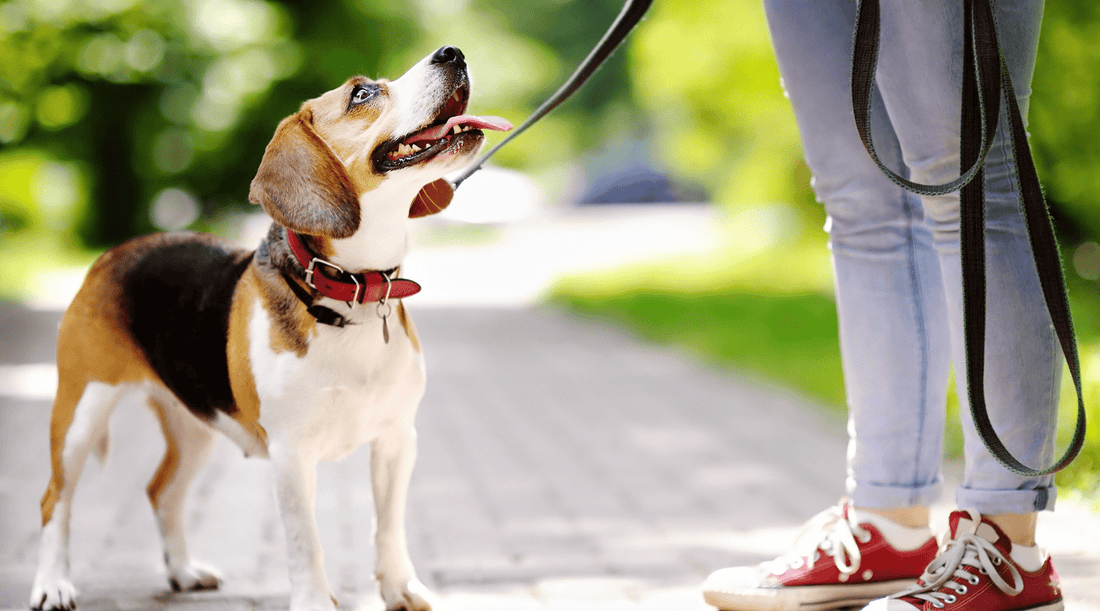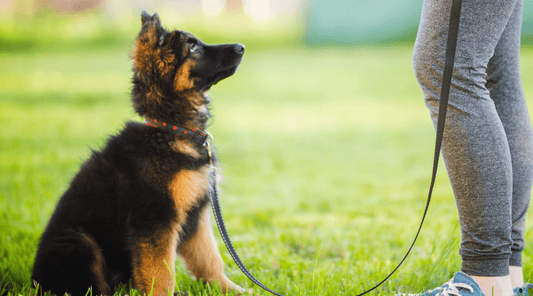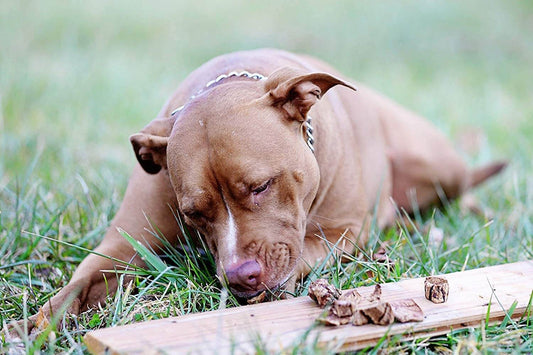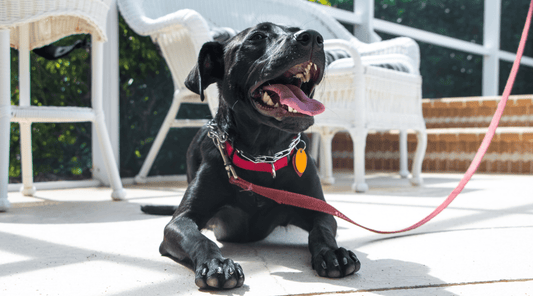
Loose Leash Walking: Replacing Sled Dog Drag with Cooperation
Dawn Miller Apr 03, 20254 Minute ReadIf you've ever been yanked down the sidewalk by an overexcited dog chasing after a squirrel, jogger, or—if we're super honest—a leaf, then you know the struggle.
You don't have to have a sled dog to know what it's like. My terrier Pixie was a force to be reckoned with when I first welcomed her into our home.
On one side, my lab mix Bruno practiced his perfect rendition of loose leash walking while the much smaller Pixie charged ahead like she was in the Iditarod (That's a famous sled race. And yes, I had to google it).
Between the two of them, it was cardio for sure. And that's when I realized Pixie had never learned how to walk on a loose leash. If I wanted to walk without the dog pulling on leash, I'd need to train her.
What Is Loose Leash Walking?
Loose leash walking means your dog walks beside you, cooperating rather than trying to steal the show.
The leash is slack, tension-free, and relaxed. You’re not dragging them, and they’re not dragging you. It’s like a polite little dance between you and your pup.
Loose leash walking is great for neighborhood strolls, trail walks, and those days when you’d rather enjoy the breeze than wrestle with your leash.
Why Is My Dog Pulling on the Leash?
Dogs pull for one simple reason: it works. They get where they want to go—and faster—by leading.
The behavior is usually a combination of things:
- Lack of training - You can't expect them to know how to walk on a leash without some instruction.
- Excitement - You're team journey. They're team destination, whatever they think that might be.
- Too much energy - Some dogs need more walks than others and don't get enough exercise for their breed, leading to hyperness.
- Inconsistent reinforcement - We've all been there, letting them pull sometimes and expecting a pleasant stroll others. It doesn't work that way.
But don’t fret. You can fix this. You just need a consistent plan, positive reinforcement training—and plenty of treats.
What You’ll Need to Start Loose Leash Training
- High-value dog treats (the good stuff—like single-ingredient beef lung bites)
- A long leash (And not a retractable one. That's not what I meant by loose leash.)
- A treat pouch that makes access easy. I found this one on Amazon. It's got all the pouches and dispensers I need for an enjoyable walk.)
- A calm walking environment to begin with.
- And most importantly—patience and repetition
Pro tip: If your dog is a strong puller, the best dog harness for pulling is a front-clip harness. It gives you more control and prevents them from launching forward. Pulling becomes counterproductive because the harness automatically pulls them to the side when they try to move forward too diligently.
This one on Amazon is Pixie's personal favorite. It's lightweight, padded for comfort, and reflective.
How to Leash Train a Dog (and Skip the Power Struggle)
Here's how Bruno and I taught Pixie to stop treating us like dog sleds.
Step 1: Start Indoors or in the Backyard
Clip the leash onto the front of the harness. Keep some treats in hand, at the ready.
Walk a few steps. If your dog stays at your side, say "yes" in a happy voice while giving them a treat.
What they're learning: Calm behavior = reward.
Step 2: Reward for Staying Close
Hold the treat at your side in a closed hand. Your dog can smell the treat—if it's a high value dog treat. They may try to get it.
But keep the hand closed and start walking. They will naturally follow your hand at your side. Open your hand and let them take the treat when they stay at your side.
Now, this isn't always what happens the first few times. If they still pull ahead, stop walking immediately. Wait for them to return to your side or guide them to your side with the closed hand.
Start walking again once they're at your side. After a few steps, reward them with "yes" and treat.
What they're learning: pulling = no progress. Walking calmly at your side = treats and forward motion.
Step 3: Use Direction Changes
To get the most use out of your harness, try this. If your dog starts barrelling ahead, change direction. Gently turn around and walk the other way.
What they're learning: You’re leading the walk, not the other way around. Pulling one way = we go the other.
Step 4: Practice “Let’s Go” and “Easy” Cues
I use "Let's go" to communicate that we're moving forward. Reward them when they stay with you.
This verbal communication prevents them from being caught off guard and reduces the 5-yard penalty for a false start. Just kidding. No penalties in positive reward training.
Dogs respond better to reward training. Communicate what you want, not what you don't or you get the opposite. Ask any parent currently enduring the terrible twos.
This leads me to the next command I use — "Easy" in the same upbeat voice. When Pixie would start to pull, I cheerfully say, "Pixie, Easy." Dogs know their names.
This is different from saying "No", "Stop", etc. Not only are these words negative in meaning. You are more likely to use a grumpy or disappointed tone with them.
Dogs have been our companions for 1000s of years. They've learned to hear frustration. Their instinct tells them that they should be afraid of an angry human. So they may pull away harder.
A cheerful tone keeps the mood positive. So, they try to please you instead of darting.
Step 5: Add Distractions Slowly
Now, let's take this show on the road!
Practice walking down a less busy neighborhood street, then in the park, and maybe progress to a business district.
Pay attention to how your dog responds. For Pixie, the field walks were actually the hardest. Every field mouse, rabbit, and lizard was calling her name.
How Dog Treats and Dog Bones Help with Leash Training
I can’t emphasize this enough: the right rewards matter.
Pretending kibble is a treat is a surefire way to have a mutiny on your hands.
Dogs respond to high-value treats because they don't get these all the time. They smell irresistible—to a sensitive dog nose. I can't smell them as a human, though. The taste and texture are different and highly enjoyable.
Dopamine rush every time.
It's worth it to use high-value dog treats for the walk itself (like those lung bites that Pixie would do algebra for). Dogs learn commands faster when the reward is extra special.
After the walk, reward them with a long-lasting dog bone to really seal the deal. And you'll have them two-stepping (or four) with you in no time.
Chewing dog bones can reduce anxiety and promote better behavior—for easier walks.
No More Struggling with Leash Manners
Give the above a try. And believe me. you and your dog will be hungry to learn more. So, before you go, join our 7-Day Dog Training Challenge to get step-by-step videos, positive reinforcement training tips, and help from real trainers.
Available On:


Disclosure: This article may contain affiliate links, which means we may earn a small commission if you make a purchase through these links—at no extra cost to you. We only recommend products we trust and believe will benefit you and your K9.



